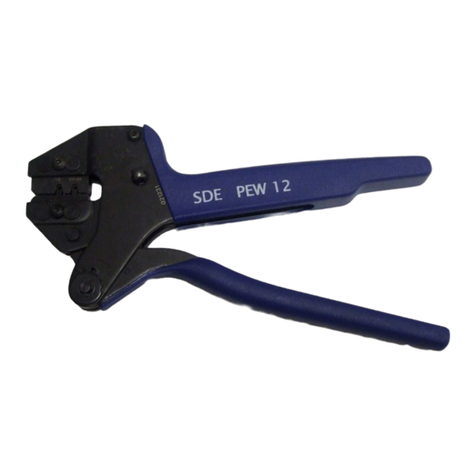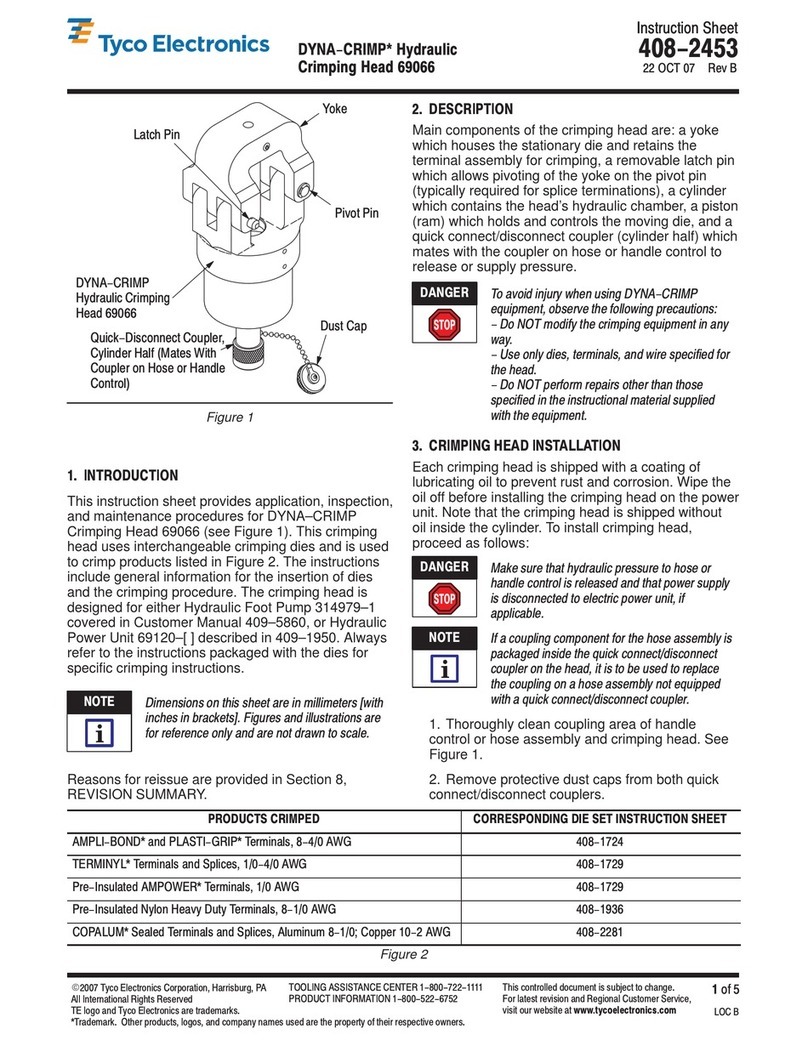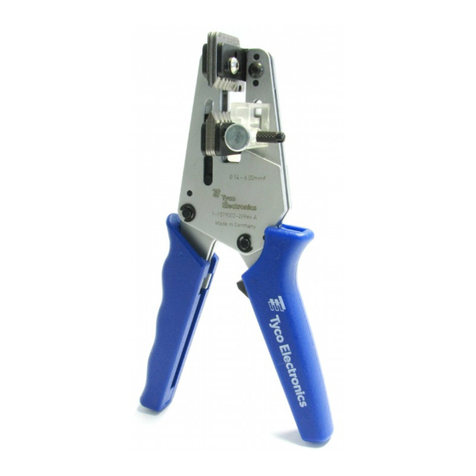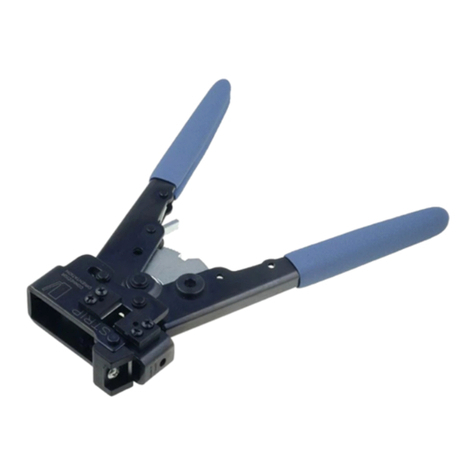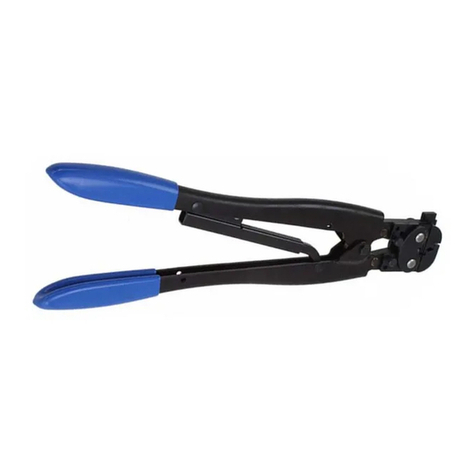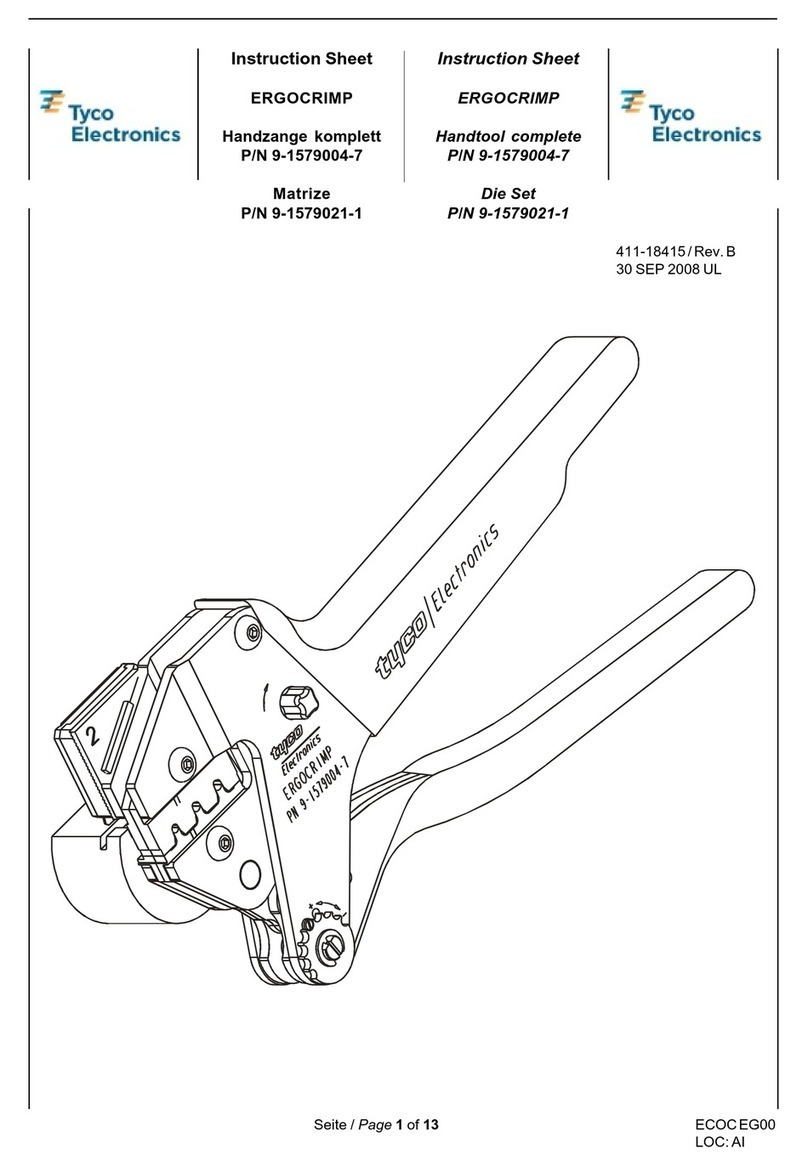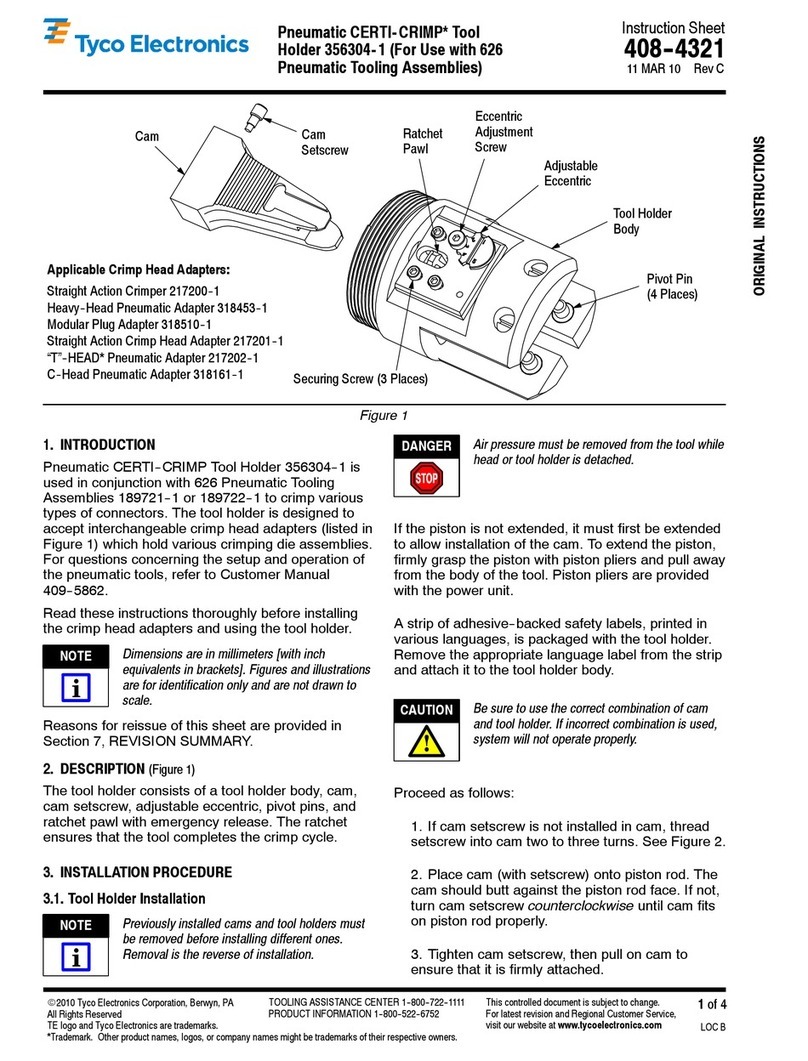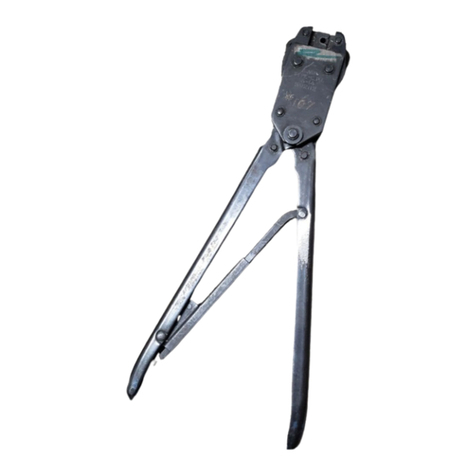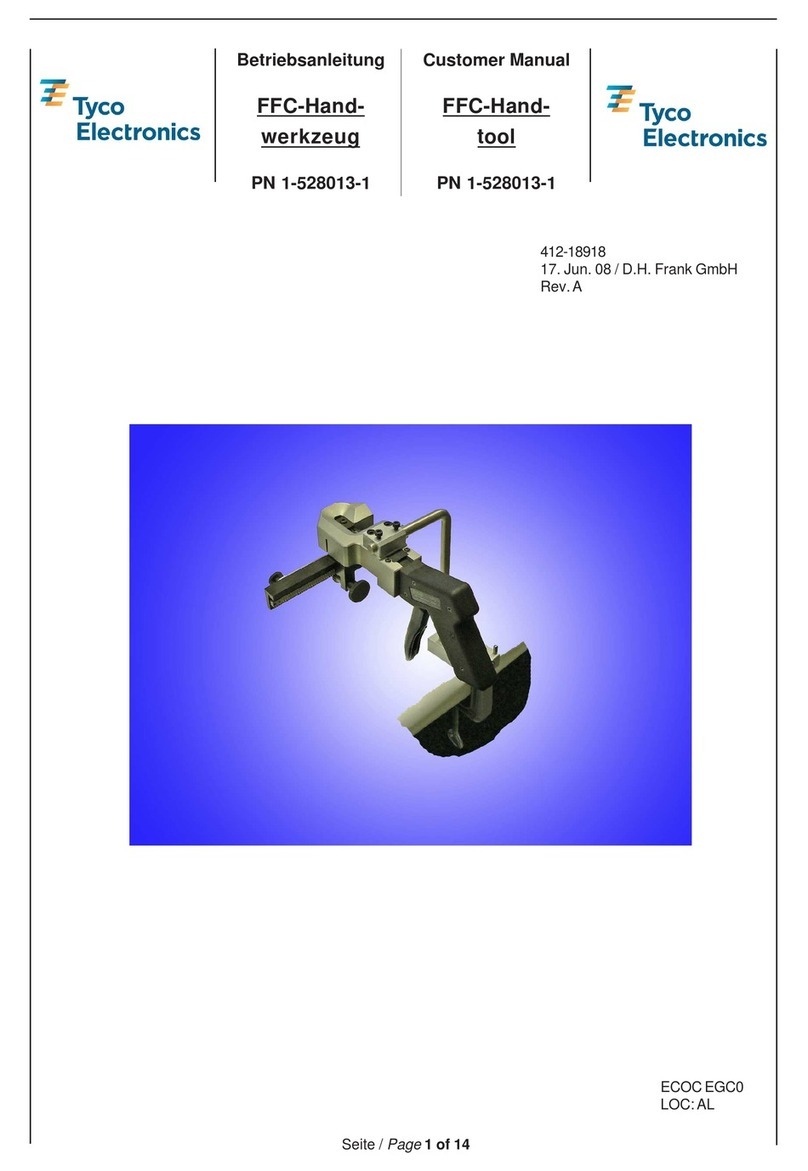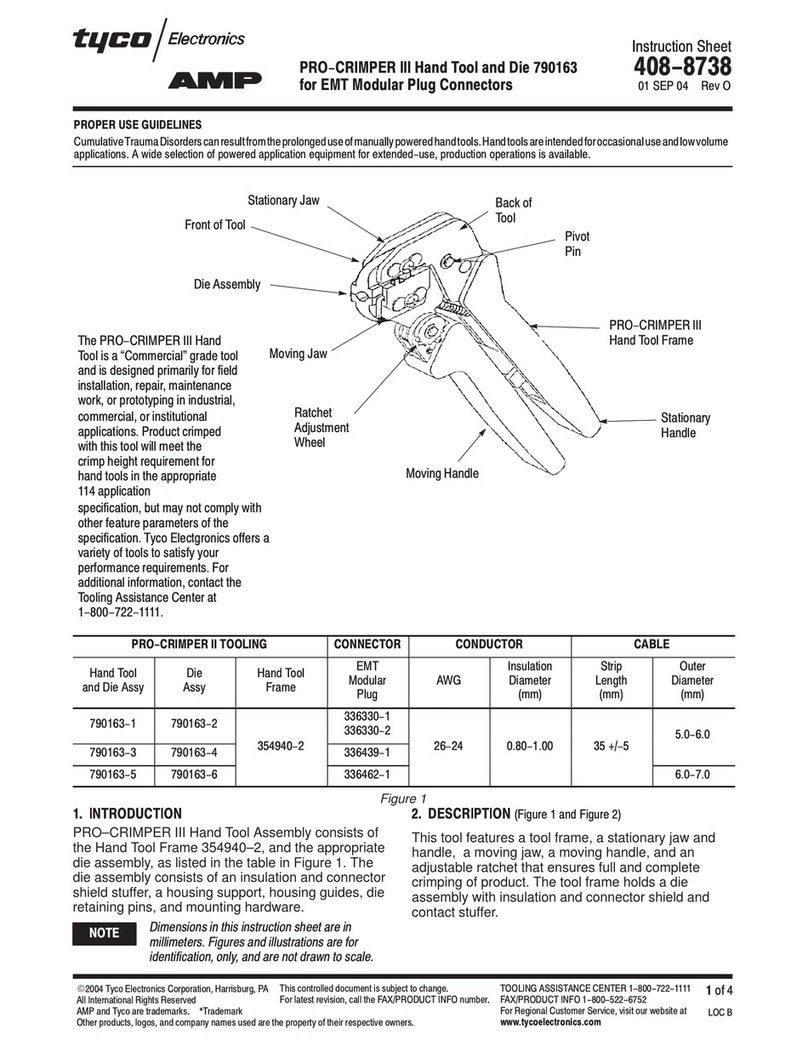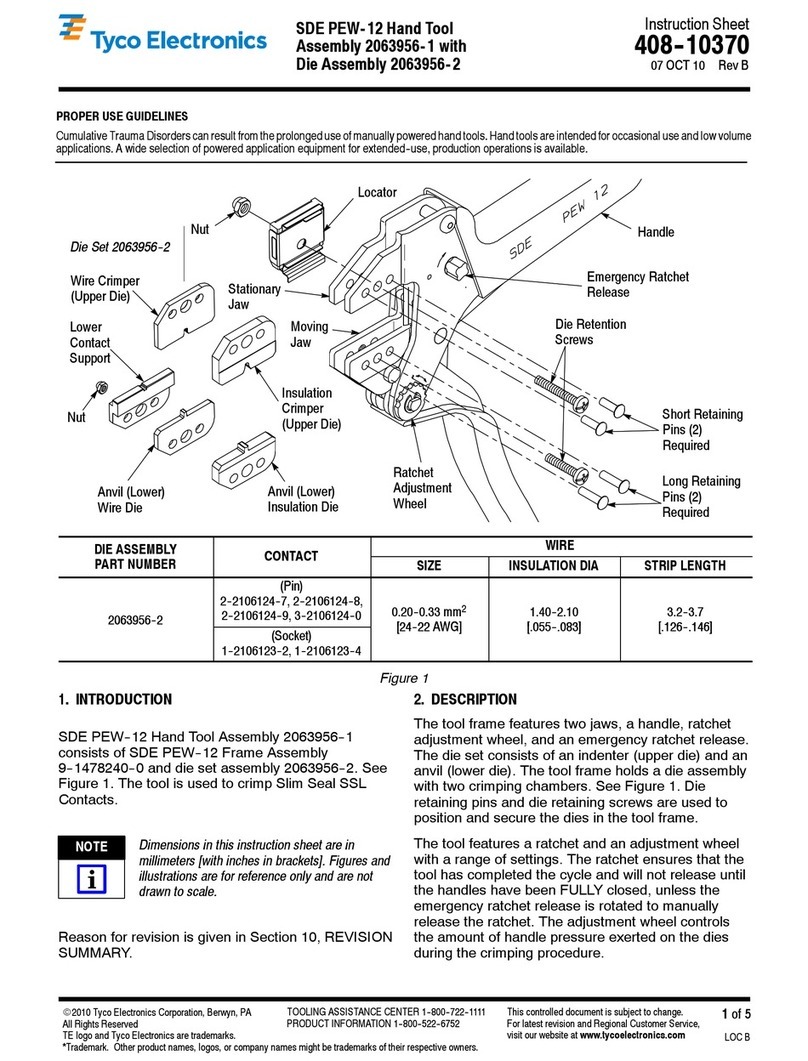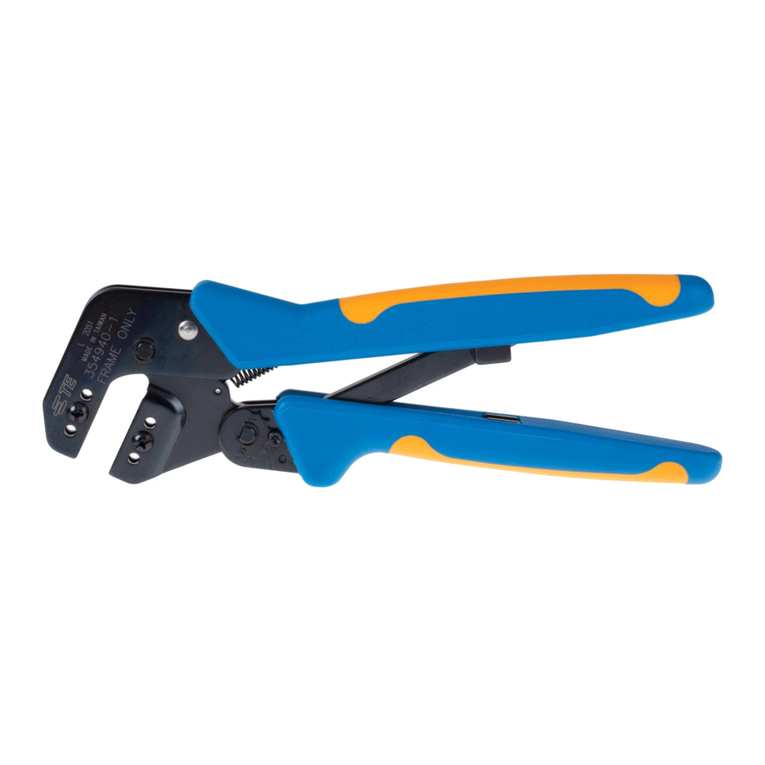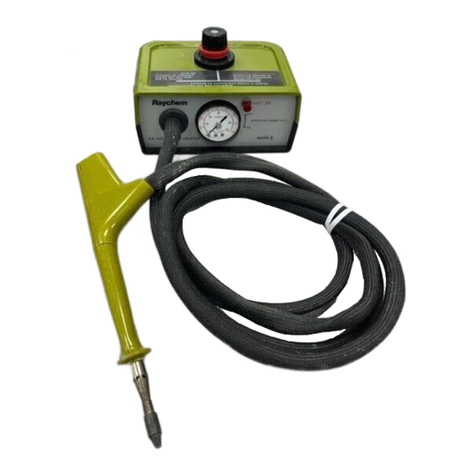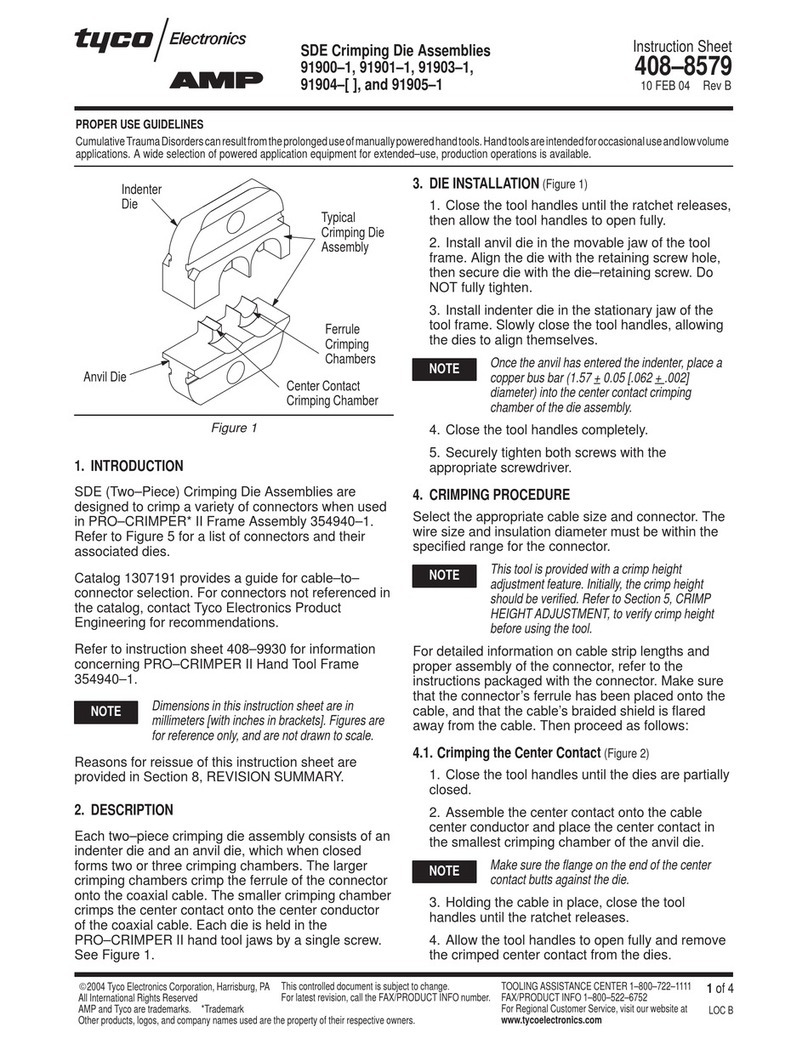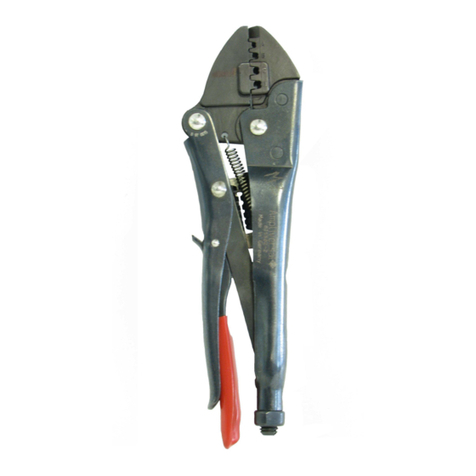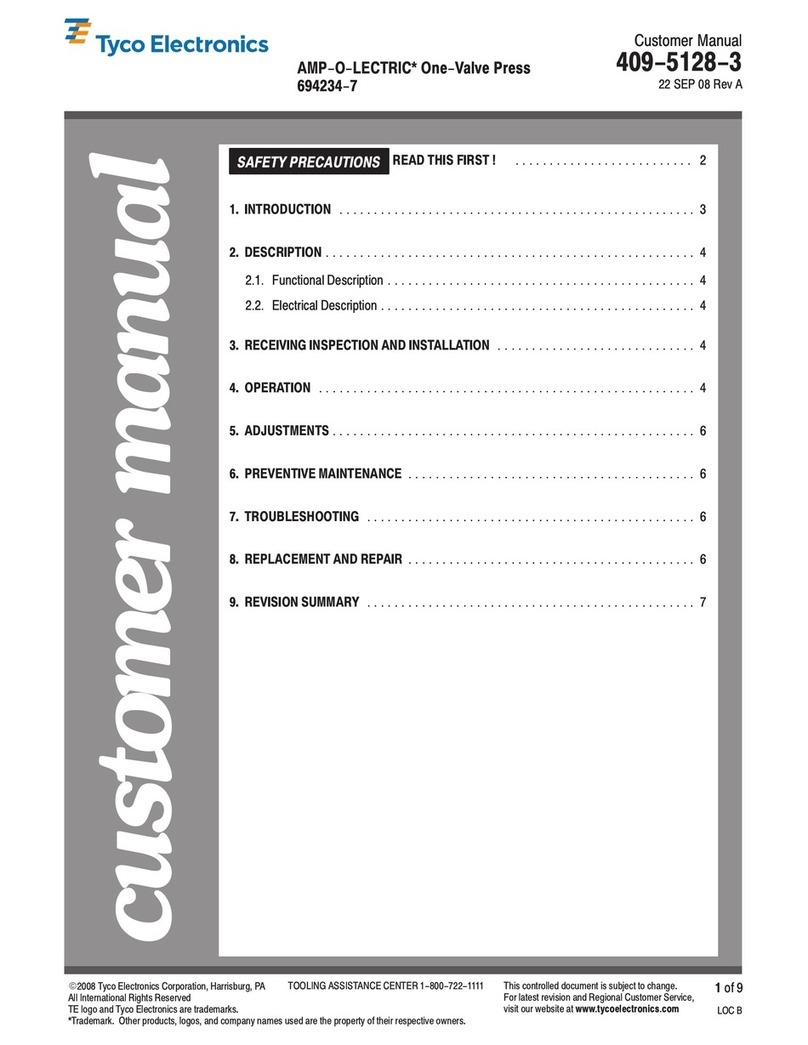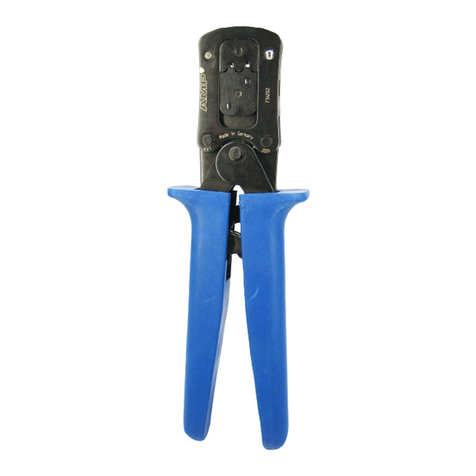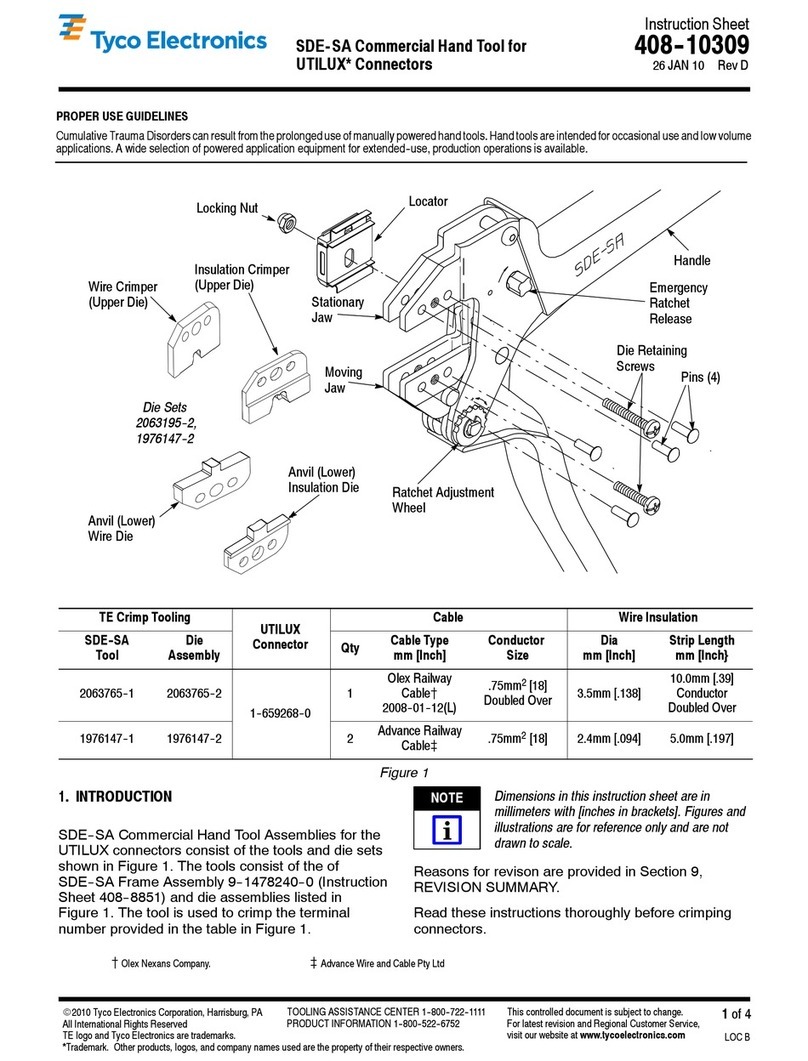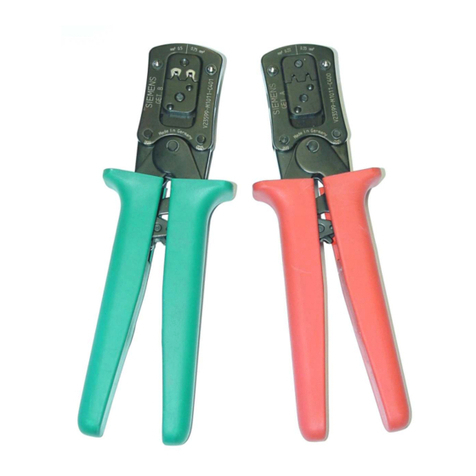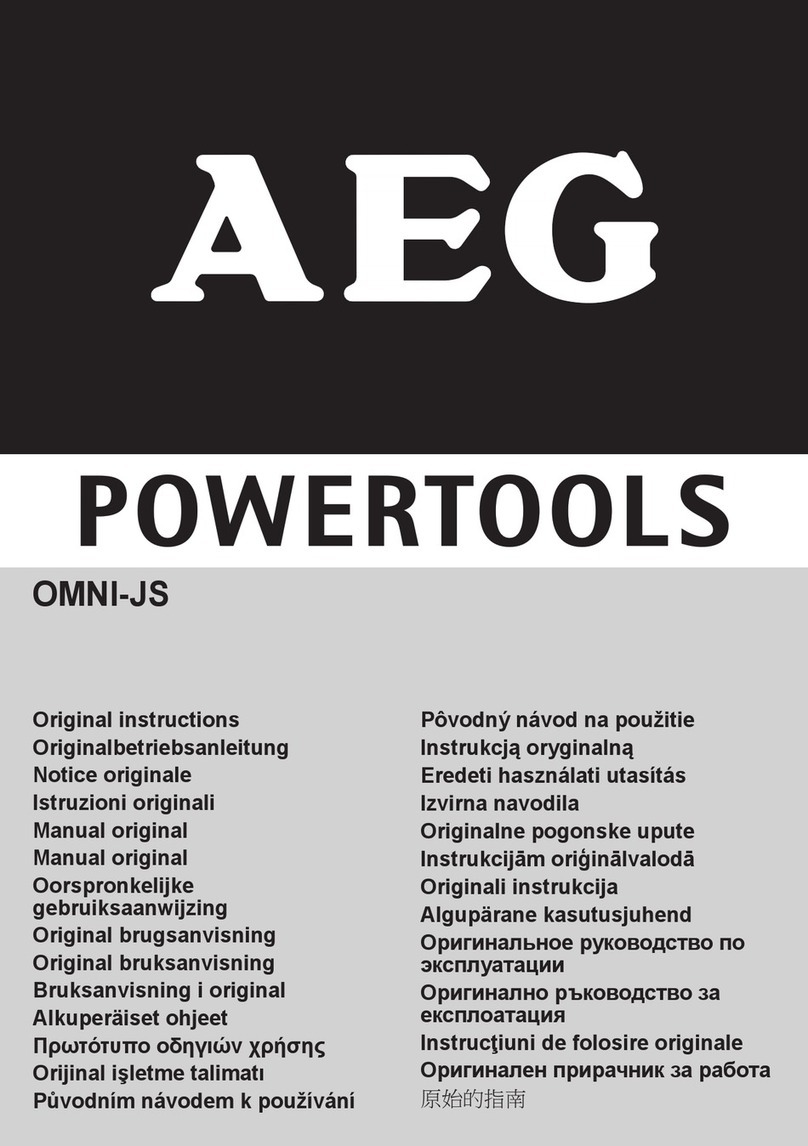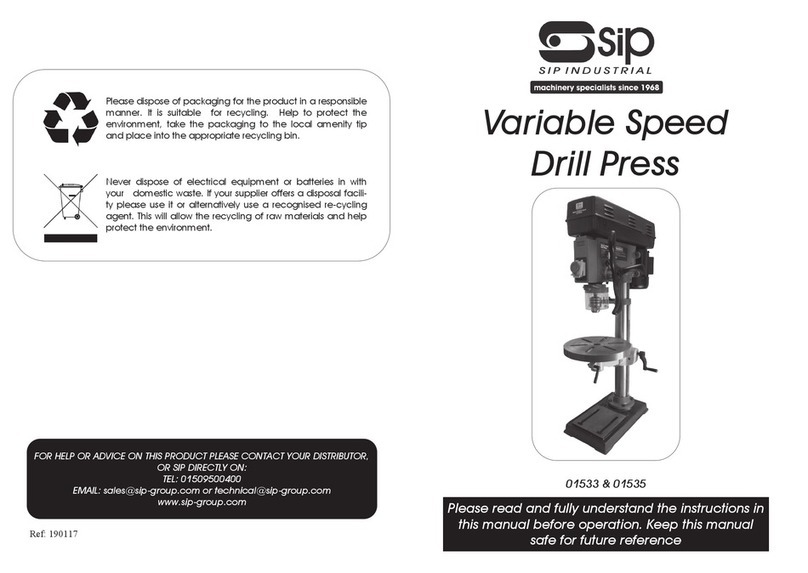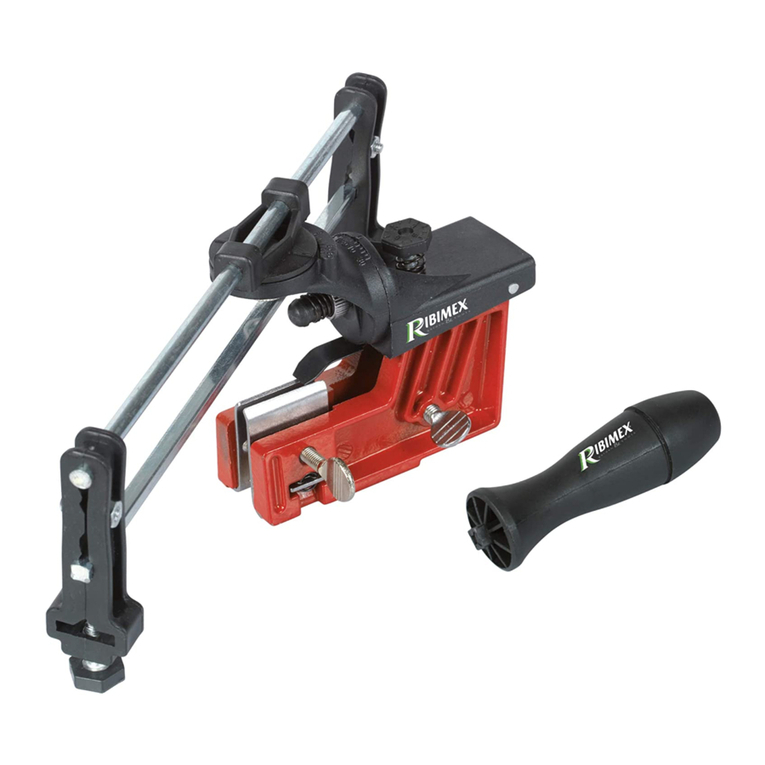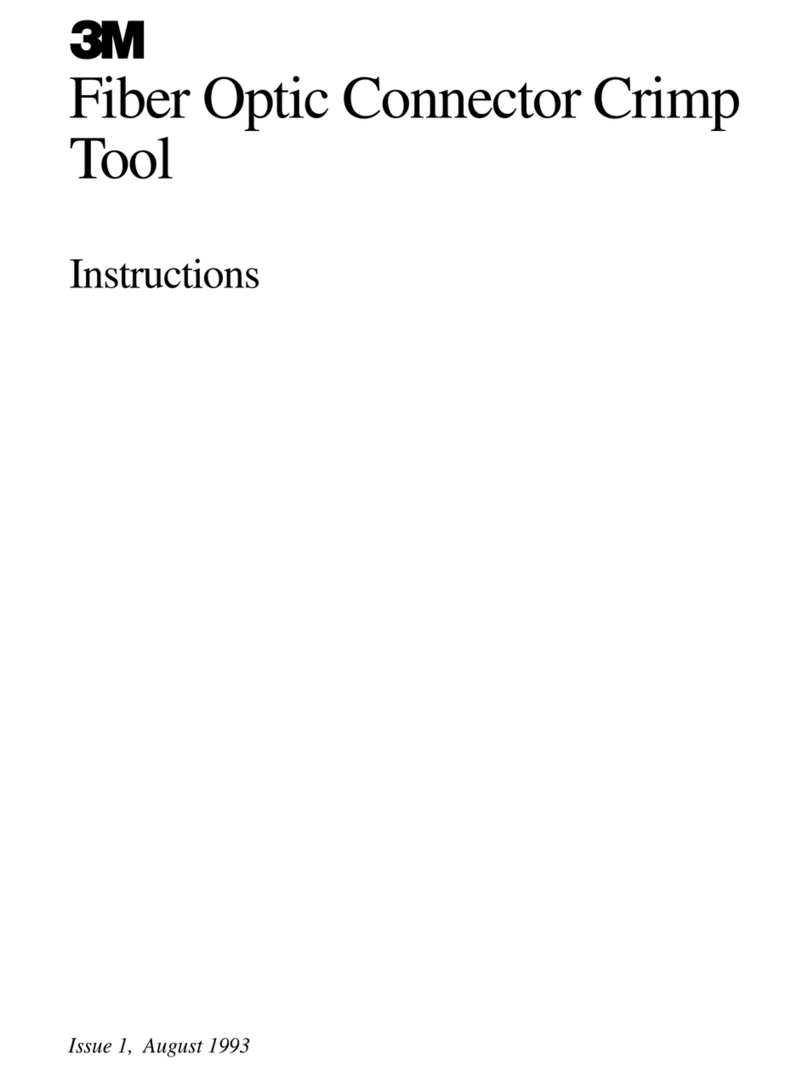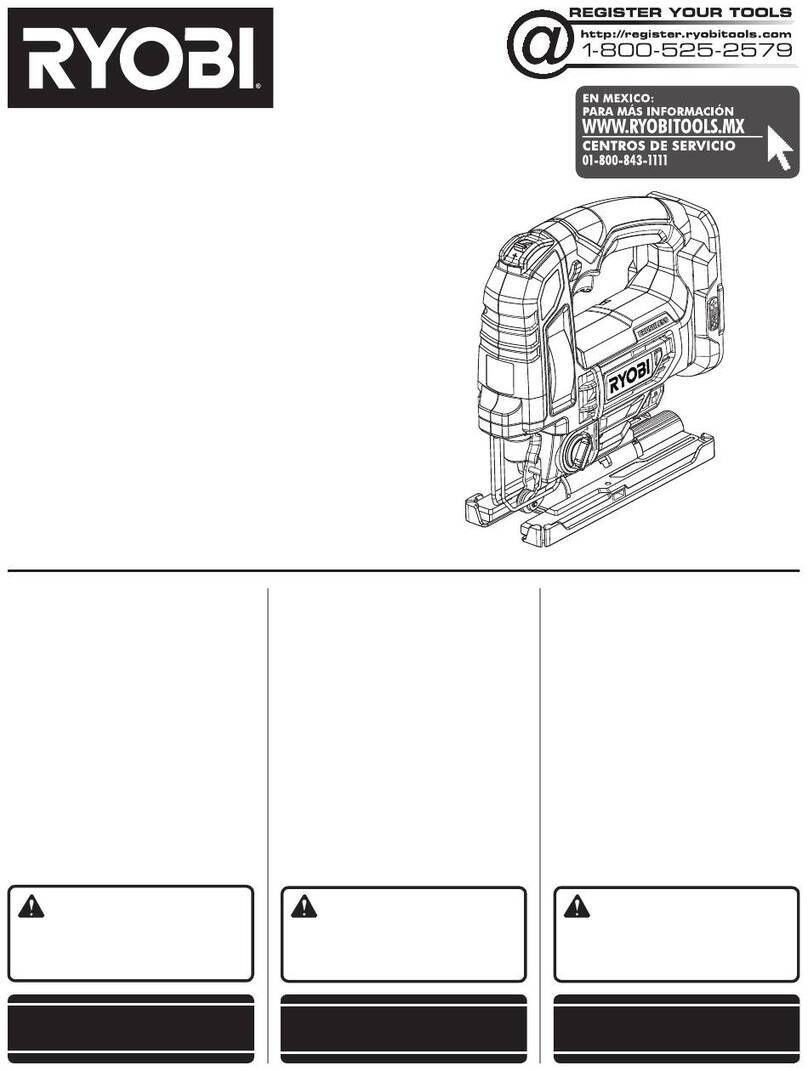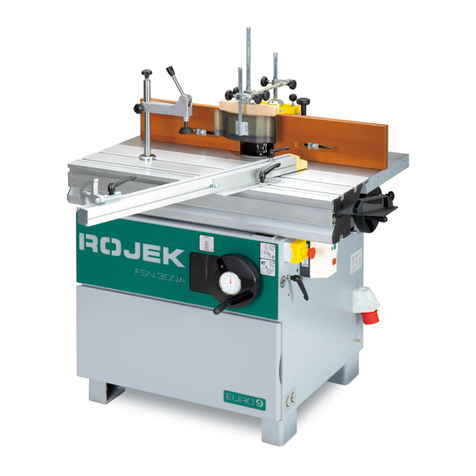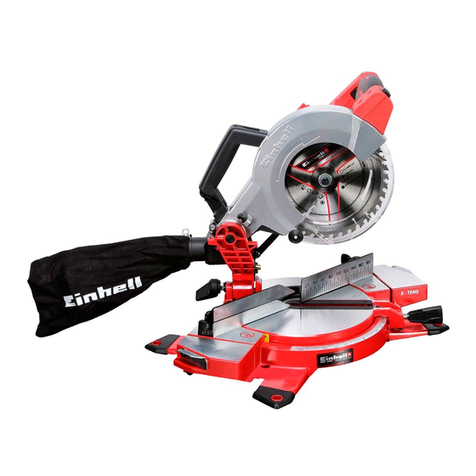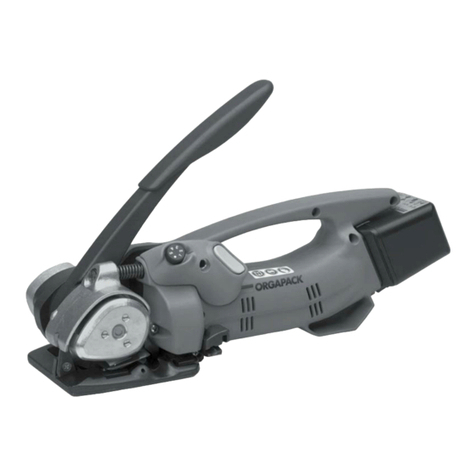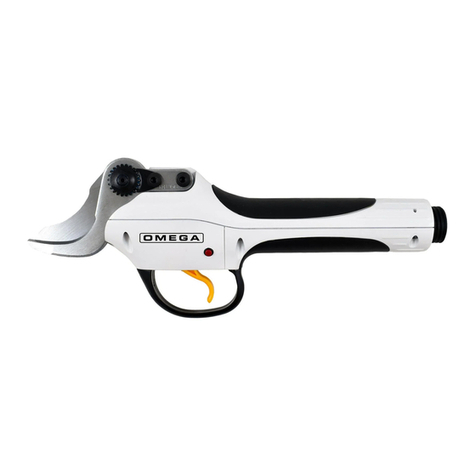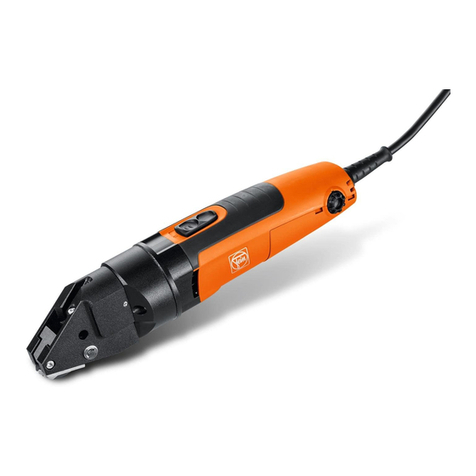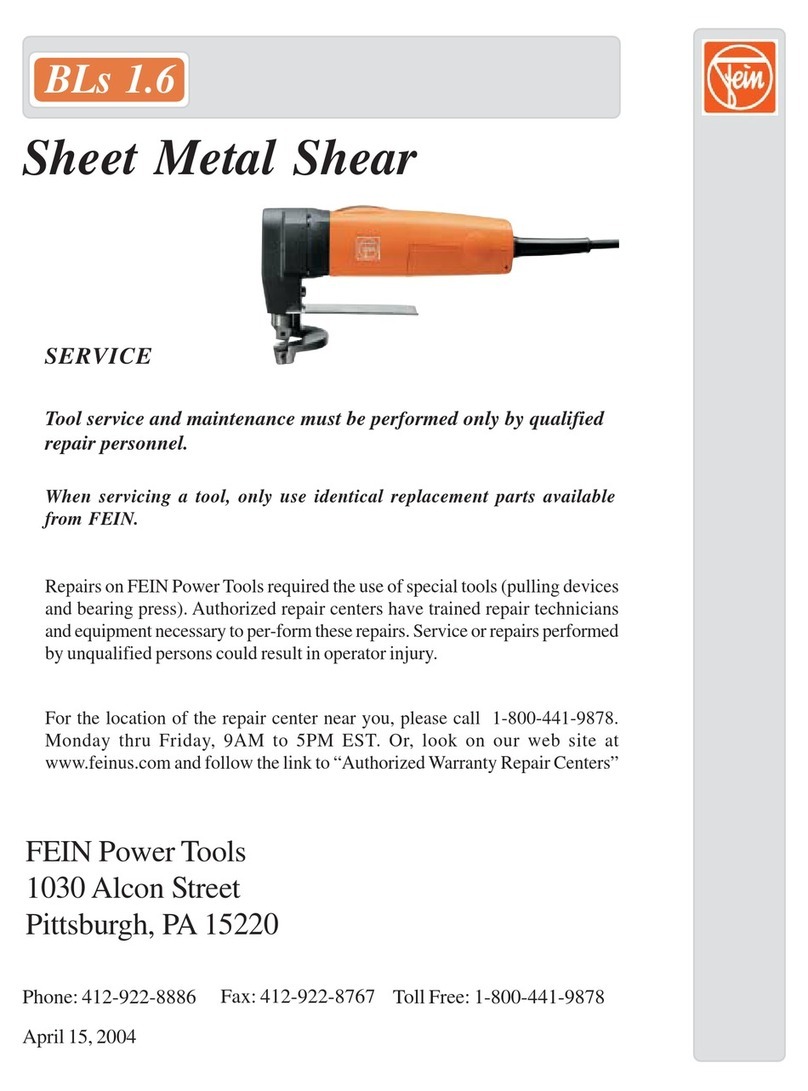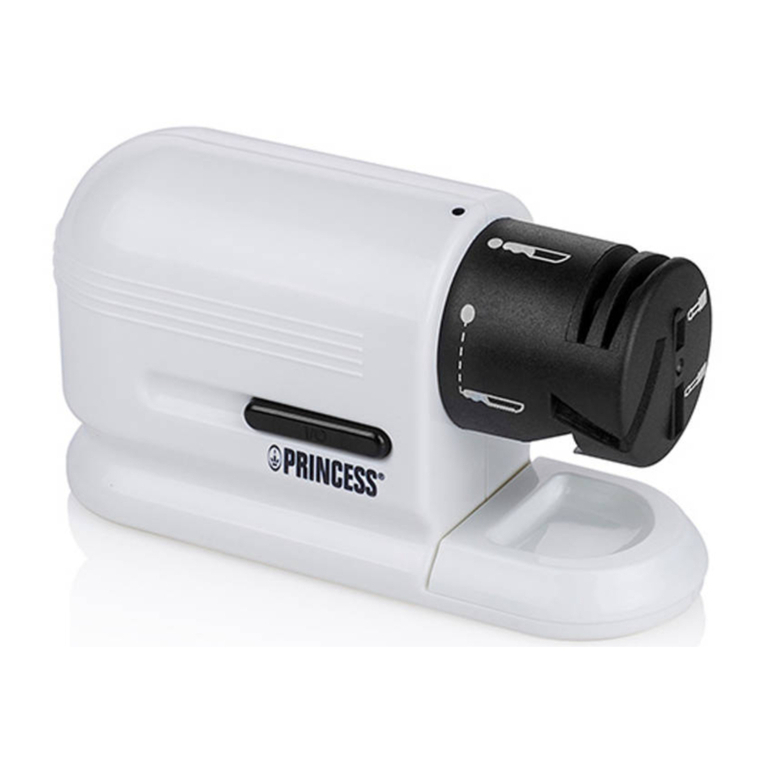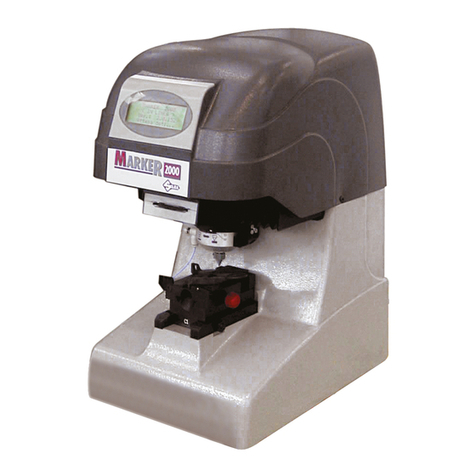
408-10043
SDE PEW-12 Hand Tool Assembly 91391-1
3
of 4Rev
A
5. C IMPING P OCEDU E
T is tool is provided wit a crimp adjustment
feature. Initially, t e crimp eig t s ould be
verified as specified in Figure 3. Refer to Section
6, CRIMP HEIGHT INSPECTION, and Section 7,
CRIMP HEIGHT ADJUSTMENT, to verify crimp
eig t before using t e tool to crimp desired
contacts and wire sizes.
Refer to the table in Figure 1 and select wire of the
specified size and insulation diameter. Strip the wire
to the length indicated in Figure 1, taking care not to
nick or cut wire strands. Select an applicable contact
and identify the appropriate crimp section according
to the wire size markings on the tool. Refer to
Figure 2 and proceed as follows:
1. Hold the tool so that the back (wire side) is
facing you. Squeeze tool handles together and
allow them to open fully.
2. Holding the contact by the mating end, insert the
contact — insulation barrel first — through the front
of the tool and into the appropriate crimp section.
3. Position the contact so that the mating end of
the contact is on the locator side of the tool, and so
that the open “U” of the wire and insulation barrels
must face the top of the tool. Place the contact up
into the nest so that the movable locator drops into
the slot in the contact. Refer to Figure 2. Butt the
front end of the wire barrel against the movable
locator.
Make sure t at bot sides of t e insulation barrel
are started evenly into t e crimping section. Do
NOT attempt to crimp an improperly positioned
contact.
6. C IMP HEIGHT INSPECTION
This inspection requires the use of a micrometer with
a modified anvil. Tyco Electronics recommends the
modified micrometer (Crimp Height Comparator
RS–1019–5LP) which may be purchased from:
ShearerIndustrialSupplyCo.
717–767–7575 or VALCO
610–691–3205
Proceed as follows:
1. Refer to Figure 1 and select a wire (maximum
size) for each crimp section listed.
2. Refer to Section 5, CRIMPING PROCEDURE,
and crimp the contact(s) accordingly.
3. Using a crimp height comparator, measure the
wire barrel crimp height listed in Figure 3. If the
crimp height conforms to that shown in the table,
the tool is considered dimensionally correct. If not,
the tool must be adjusted. Refer to Section 7,
CRIMP HEIGHT ADJUSTMENT.
Pos t on Po nt on
Center of W re
Barrel Oppos te
Seam
Mod f ed Anv l A"
WI E SIZE,
AWG C IMP HEIGHT
DIMENSION A" AND TOLE ANCE (+)
30-26 0.58 +0.05 [.023 +.002]
24-22 0.74 +0.05 [.029 +.002]
20 0.89 +0.05 [.035 +.002]
Figure 3
Damaged product s ould not be used. If a
damaged contact is evident, it s ould be
replaced. Contacts must not be re-terminated.
7. C IMP HEIGHT ADJUSTMENT
Although the ratchet is preset prior to shipment, it is
important to verify the crimp height using a
micrometer or caliper. General use and subsequent
wear may cause the tool to go out of adjustment. It is
recommended that crimp height be inspected, and the
ratchet be adjusted, if necessary, on a regular basis.
Refer to Figure 4, and proceed as follows:
1. If the crimp height is larger than recommended,
remove the ratchet wheel adjustment screw and
rotate the adjustment wheel counterclockwise (+)
to a higher setting. Reinstall the screw. Repeat as
required.
2. If the crimp height is smaller than
recommended, remove the ratchet wheel
adjustment screw and rotate the adjustment wheel
clockwise (–) to a lower setting. Reinstall the
screw. Repeat as required.
3. If the crimp cannot be made to conform to the
recommended crimp height, the tool or die set
must be replaced. See Section 9,
REPLACEMENT.
Figure 4
Ratchet Adjustment Wheel
Adjustment
Screw
NOTE
CAUTION
CAUTION
